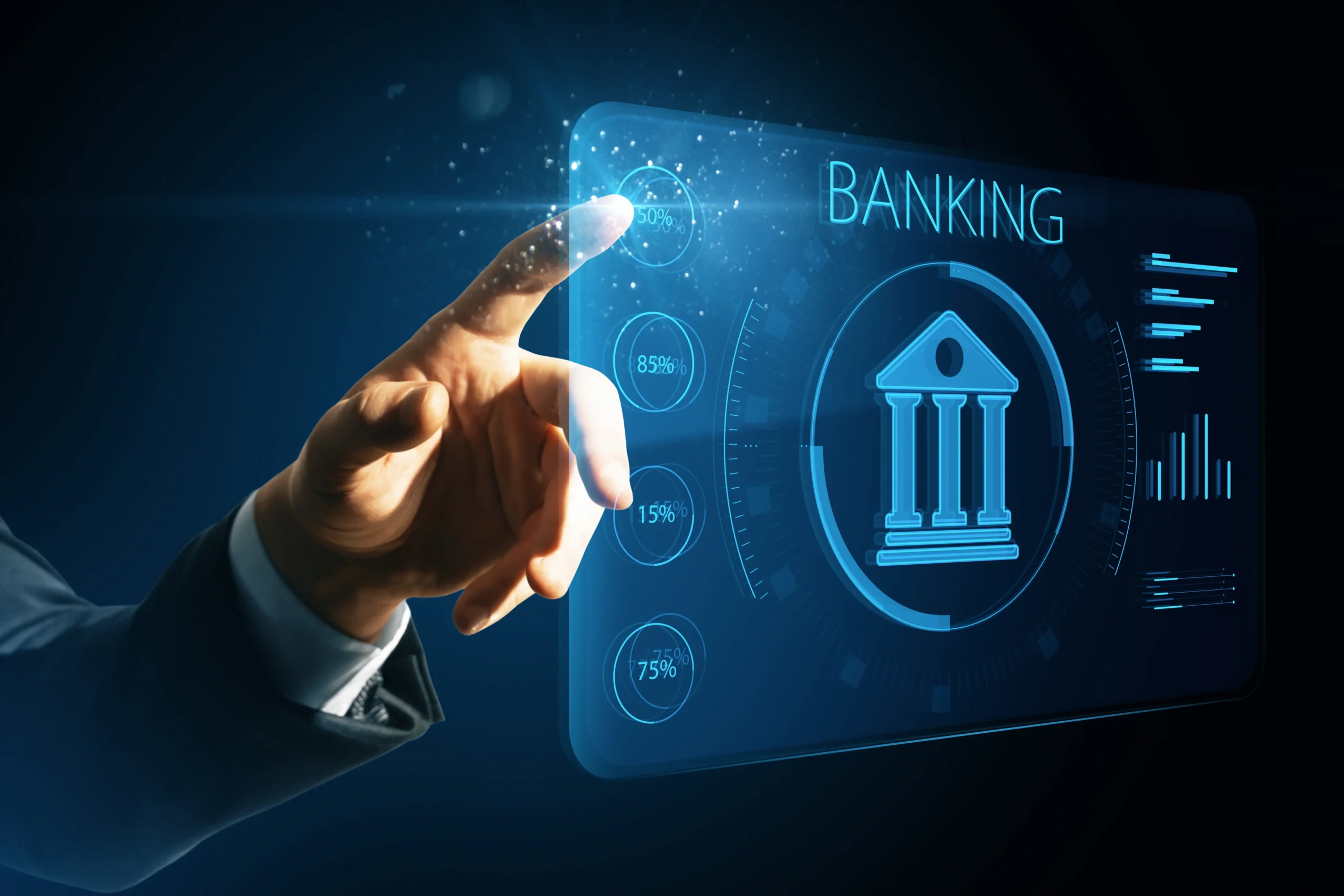The banking sector has undergone profound changes in recent years, transitioning from traditional banking methods to digital-first solutions. The rise of fintech companies, digital wallets, mobile banking apps, and blockchain technology has disrupted traditional banking practices, leading to improved customer experiences and operational efficiencies. This article will explore the ongoing digital transformation in the banking industry, highlighting how technology is reshaping financial services and the steps banks are taking to ensure future growth.
1. The Rise of Digital Banking
Traditional banking has largely relied on physical branches and manual processes. However, the demand for convenience and faster services has led to the rise of digital banking, which enables customers to access financial services via mobile apps or online platforms.
- Mobile Banking Apps: With mobile banking apps, customers can check balances, transfer money, pay bills, and access other financial services from anywhere at any time.
- Paperless Transactions: Digital banking minimizes the need for paper-based transactions, reducing overhead costs and promoting sustainability.
- Branchless Banking: Banks are increasingly adopting branchless banking models, relying on digital platforms to serve customers, thus reducing operational costs.
2. The Role of Artificial Intelligence and Automation
Artificial Intelligence (AI) and automation are playing a key role in transforming the way banks provide services. From chatbots offering customer support to AI-powered fraud detection systems, these technologies are enhancing both operational efficiency and customer experience.
- AI Chatbots: AI-driven chatbots are revolutionizing customer service by providing instant responses to customer queries and handling routine tasks such as checking balances or making transfers.
- Fraud Detection: AI-powered systems analyze transaction patterns in real-time, identifying unusual activities and preventing fraudulent transactions before they happen.
- Process Automation: Banks are using automation tools to handle repetitive tasks, such as data entry and processing, freeing up human resources to focus on more complex activities.
3. Blockchain and Its Impact on Banking
Blockchain technology is gaining traction in the banking sector due to its decentralized, secure, and transparent nature. It has the potential to reduce costs, improve efficiency, and enhance security in financial transactions.
- Cross-Border Payments: Blockchain enables faster, cheaper, and more secure international money transfers by eliminating intermediaries.
- Smart Contracts: Blockchain allows for the creation of self-executing contracts that automatically enforce the terms of an agreement, reducing the need for intermediaries and manual processing.
- Enhanced Security: Transactions recorded on a blockchain are immutable, making it nearly impossible to alter or tamper with records, thus improving security.
4. Open Banking and Collaboration with Fintech Companies
Open banking is another crucial development in the digital transformation of banking. Open banking allows third-party developers to access banking data, with customer consent, to create innovative financial products and services.
- Improved Customer Experience: Open banking allows customers to share their financial data securely with third-party apps, which in turn can provide personalized services like tailored loan rates or budgeting advice.
- Fintech Partnerships: Banks are increasingly partnering with fintech companies to offer customers a wider array of financial products, such as peer-to-peer lending, insurance, or investment platforms.
- Increased Competition: Open banking promotes competition in the financial services sector by enabling new players to enter the market, resulting in better services and lower costs for customers.
5. Cybersecurity: A Top Priority for Banks
As banks embrace digital transformation, ensuring the security of customer data and transactions has become more critical than ever. Cybersecurity is a top priority, and banks are investing heavily in advanced technologies to protect against data breaches and cyberattacks.
- Multi-Factor Authentication: Banks are implementing multi-factor authentication (MFA) to enhance security for customers accessing their accounts online.
- AI-Driven Security Systems: AI is being used to identify and respond to potential security threats in real-time, helping banks mitigate risks.
- Blockchain Security: The decentralized nature of blockchain provides an added layer of security, making it a valuable tool for protecting sensitive banking data.
6. The Future of Banking: Digital Currencies and Central Bank Digital Currencies (CBDCs)
The rise of cryptocurrencies and the concept of Central Bank Digital Currencies (CBDCs) have sparked a new wave of innovation in banking. These digital currencies have the potential to reshape the global financial system.
- Cryptocurrency Integration: Banks are exploring ways to integrate cryptocurrencies like Bitcoin and Ethereum into their services, allowing customers to trade or store digital assets.
- Central Bank Digital Currencies (CBDCs): Governments are exploring the creation of digital versions of their national currencies, which could provide a more secure and efficient way to conduct transactions.
- Cross-Border Payments: CBDCs could streamline cross-border payments, reducing costs and eliminating the complexities of traditional banking systems.
Conclusion:
The digital transformation of the banking industry is not just a trend; it is the future. From mobile banking and AI to blockchain technology and open banking, these innovations are transforming how banks operate and how customers interact with their financial institutions. As banks continue to adapt to these changes, they must focus on enhancing customer experience, ensuring security, and staying ahead of technological advancements to thrive in the competitive financial landscape of the future.



